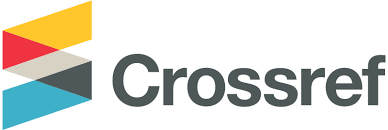PENGARUH PENERAPAN ‘PAPADAK’ TERHADAP PENGETAHUAN DAN PARTISIPASI MASYARAKAT PADA UPAYA KONSERVASI LAUT DI ROTE TENGAH, NUSA TENGGARA TIMUR
Abstract
‘Papadak’ merupakan kearifan lokal yang diterapkan untuk pengelolaan pesisir oleh masyarakat di Kecamatan Rote Tengah. Agenda yang dilaksanakan selama Papadak memberikan akses pengetahuan dan sarana untuk berpartisipasi kepada masyarakat. Tujuan penelitian ini adalah untuk mengkaji pengaruh kearifan lokal Papadak terhadap pengetahuan dan partisipasi masyarakat pada
upaya konservasi laut di Kecamatan Rote Tengah. Penelitian ini dilaksanakan pada bulan September-Oktober 2018 di Desa Siomeda yang telah menerapkan Papadak dan Desa Maubesi yang belum menerapkan. Metode ex post facto dengan kearifan lokal Papadak sebagai variabel bebas dan pengetahuan serta partisipasi masyarakat sebagai variabel terikat digunakan dalam penelitian ini. Sampel responden berusia 18-64 tahun dipilih secara acak sebanyak 88 orang dari Desa Maubesi dan 80 orang dari Desa Siomeda. Data diperoleh dengan menggunakan instrumen penelitian berupa kuesioner, wawancara informan kunci, dan studi dokumen. Analisis data menggunakan uji-U Mann Whitney. Hasil penelitian menunjukkan bahwa rata-rata nilai pengetahuan Desa Maubesi lebih tinggi dari Desa Siomeda, sedangkan rata-rata nilai partisipasi masyarakat menunjukkan hasil sebaliknya. Pengujian hipotesis menyimpulkan tidak ada pengaruh penerapan kearifan lokal Papadak terhadap pengetahuan dan partisipasi masyarakat pada upaya konservasi laut di Kecamatan Rote Tengah. Penelitian lebih lanjut dibutuhkan untuk mengetahui faktor lain yang mempengaruhi pengetahuan dan partisipasi masyarakat dan cara untuk meningkatkannya
Tittle: The Effect of ‘Papadak’ Implementation on Community Knowledge and Their Participation in Marine Conservation in the Central Rote, East Nusa Tenggara
‘Papadak’ is a local wisdom in the coastal management within community in Central Rote District. Papadak provided community with access to knowledge and opportunity to participate in marine conservation efforts. The purpose of this study was to determine the effect of Papadak on community knowledge and participation in marine conservation in Central Rote. This study was conducted in September-October 2018 in Siomeda Village which had implemented Papadak compared with Maubesi Village which had not implemented Papadak. Method used ex post facto method. Random sampling was used to select 88 people from Maubesi and 80 people from Siomeda ranged between 18-64 years old. Data were collected through questionnaires, key informants interview, and document review. Data then were analysed by U-test. The results showed the higher average score of community knowledge in Maubesi rather than in Siomeda, while the average score of community participation showed the opposite result. This study concluded that there was no effect of Papadak on community knowledge and participation in marine conservation in Central Rote District. Further research is needed to discover other factors influencing community knowledge and participation and how to improve them
Keywords
Full Text:
PDFReferences
Apuke, O. D. (2017). Quantitative research methods a synopsis approach. Arabian Journal of Business and Management Review, 6(10), 40–47. DOI: https://doi.org/10.12816/0040336.
BKKPN Kupang. (2016). Pengukuhan Manaholo (pengawas Papadak/Hoholok) wilayah pesisir TNP Laut Sawu, Kabupaten Rote Ndao. Kupang.
Diamantopoulos, A., Schlegelmilch, B. B., Sinkovics, R. R., & Bohlen, G. M. (2003). Can socio-demographics still play a role in profiling green consumers ? A review of the evidence and an empirical investigation. Journal of Business Research, 56, 465–480. DOI: https://doi.org/10.1016/S0148-2963(01)00241-7.
Dunn, W. N. (2016). Public policy analysis: An introduction (5th ed.). New York: Routledge.
Frick, J., Kaiser, F. G., & Wilson, M. (2004). Environmental knowledge and conservation behavior: Exploring prevalence and structure in a representative sample. Personality and Individual Differences, 37(8), 1597–1613. DOI: https://doi.org/10.1016/j.paid.2004.02.015.
Gunari, B. F., Persada, C., & Ansar, Z. (2017). Priority factors for community participation in the planning stage of neighborhood upgrading shelter and sector project in Bandar Lampung. The Indonesian Journal of Planning and Development, 2(2), 87–93. DOI: https://doi.org/10.14710/ijpd.2.2.87-93.
Hidayat, R. (2017). Dukungan kearifan lokal Hoholok/ Papadak dalam pengelolaan Taman Nasional Perairan Laut Sawu di Kabupaten Rote Ndao.
Higgins-Desbiolles, F. (2009). Indigenous ecotourism’s role in transforming ecological consciousness. Journal of Ecotourism, 8(2), 144–160. DOI: https://doi.org/10.1080/14724040802696031.
International Association of Public Participation. (2006). IAP2’s public participation spectrum. Denver: International Association for Public Participation.
Iqbal, M. (2007). Concept and implementation of participation and empowerment : reflection from the coffee IPM-SECP. Makara, Sosial Humaniora, 11(2), 58–70.
Karepesina, S. S., Susilo, E., & Indrayani, E. (2013). Eksistensi hukum adat dalam melindungi pelestarian sasi ikan lompa di Desa Haruku Kabupaten Maluku Tengah. ECSOFIM (Economic and Social of Fisheries and Marine), 1(1), 25–41.
[KKP] Kementerian Kelautan dan Perikanan. (2017). Dukungan Kearifan Lokal “Hoholok/Papadak” dalam Pengelolaan Taman Nasional Perairan Laut Sawu di Kabupaten Rote Ndao. Retrieved from. https://kkp.go.id/djprl/bkkpnkupang/artikel/3570-dukungan-kearifan-lokal-hoholok-papadak-dalam-pengelolaan-taman-nasional-perairan-laut-sawu-di-kabupaten-rote-ndao.
Latif, S. A., Omar, M. S., Bidin, Y. H., & Awang, Z. (2013). Role of Environmental Knowledge in Creating Pro-Environmental Residents. Procedia - Social and Behavioral Sciences, 105, 866–874. DOI: https://doi.org/10.1016/j.sbspro.2013.11.088.
MacKinnon, K., Dudley, N., & Sandwith, T. (2011). Natural solutions: Protected areas helping people to cope with climate change. Oryx, 45(4), 461–462. DOI: https://doi.org/10.1017/S0030605311001608.
Masud, M. M., Aldakhil, A. M., Nassani, A. A., & Azam, M. N. (2017). Community-based ecotourism management for sustainable development of marine protected areas in Malaysia. Ocean & Coastal Management, 136, 104–112. DOI: https://doi.org/10.1016/j.ocecoaman.2016.11.023.
Méndez-López, M. E., García-Frapolli, E., Pritchard, D. J., Sánchez González, M. C., Ruiz-Mallén, I., Porter-Bolland, L., & Reyes-Garcia, V. (2014). Local participation in biodiversity conservation initiatives: A comparative analysis of different models in South East Mexico. Journal of Environmental Management, 145, 321–329. DOI:https://doi.org/10.1016/j.jenvman.2014.06.028.
Nabatchi, T. (2012). Putting the “public” back in public values research: Designing participation to identify and respond to values. Public Administration Review, 72(5), 699–708. DOI: https://doi.org/10.111/j.1540-6210.2012.02544.x.Putting.
O’Bryhim, J. R., & Parsons, E. C. M. (2015). Increased knowledge about sharks increases public concern about their conservation. Marine Policy, 56, 43–47. DOI: https://doi.org/10.1016/j.marpol.2015.02.007.
Oktavia, P., Salim, W., & Perdanahardja, G. (2018). Reinventing papadak/hoholok as a traditional management system of marine resources in Rote Ndao, Indonesia. Ocean and Coastal Management, 161(January), 37–49. DOI: https://doi.org/10.1016/j.ocecoaman.2018.04.018.
Rowley, J. (2007). The wisdom hierarchy: Representations of the DIKW hierarchy. Journal of Information Science, 33(2), 163–180. DOI: https://doi.org/10.1177/0165551506070706.
Steel, B. S., Smith, C., Opsommer, L., Curiel, S., & Warner-Steel, R. (2005). Public ocean literacy in the United States. Ocean and Coastal Management, 48(2), 97–114. DOI; https://doi.org/10.1016/j.ocecoaman.2005.01.002.
Sumargo, B. (2018). Comparing better environmental knowledge based on education and income using the odds ratio. Procedia Computer Science, 135, 105–112. DOI: https://doi.org/10.1016/j.procs.2018.08.155.
Thaman, B., Icely, J. D., Fragoso, B. D. D., & Veitayaki, J. (2016). A comparison of rural community perceptions and involvement in conservation between the Fiji Islands and Southwestern Portugal. Ocean and Coastal Management, 133, 43–52. https://doi.org/10.1016/j.ocecoaman.2016.09.007.
Trenouth, A. L., Harte, C., de Heer, C. P., Dewan, K., Grage, A., Primo, C., & Campbell, M. L. (2012). Public perception of marine and coastal protected areas in Tasmania, Australia: Importance, management and hazards. Ocean and Coastal Management, 67, 19–29. https://doi.org/10.1016/j.ocecoaman.2012.04.007.
Utomo, H. K., Cinderakasih, M. I., & Soebagjo, N. (2015). Bureaucracy reform , community participation and e-bureaucracy under Regent Winesa and Regent Putu Artha in Jembrana , Bali. Makara Hubs-Asia, 19(1), 15–26. https://doi.org/10.7454/mssh.v19i1.3470.
Widyastini, T., & Dharmawan, A. H. (2013). Efektivitas Awig-Awig dalam pengaturan kehidupan masyarakat nelayan di Pantai Kedonganan Bali. Jurnal Sosiologi Pedesaan, 1(1), 37–51. Retrieved from http://repository.ipb.ac.id/handle/123456789/66071.
DOI: http://dx.doi.org/10.15578/jksekp.v10i1.7933
Indexed by:
---------------------------------------------------------------------------------------
Published by
Research Center for Marine and Fisheries Socio-Economic
in collaboration with
Indonesian Marine and Fisheries Socio-Economics Research Network
This work is licensed under a Creative Commons Attribution-NonCommercial-ShareAlike 4.0 International License.

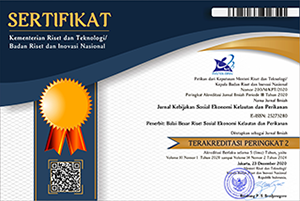
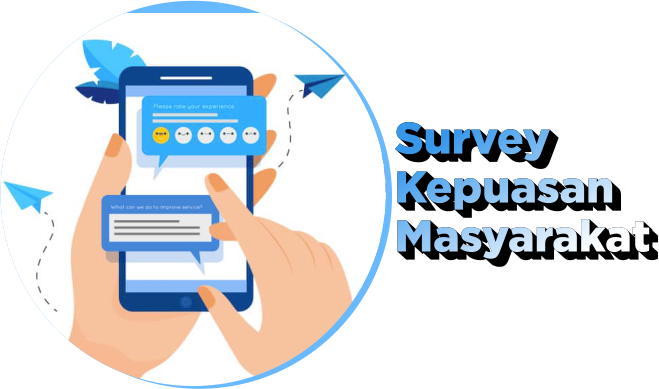







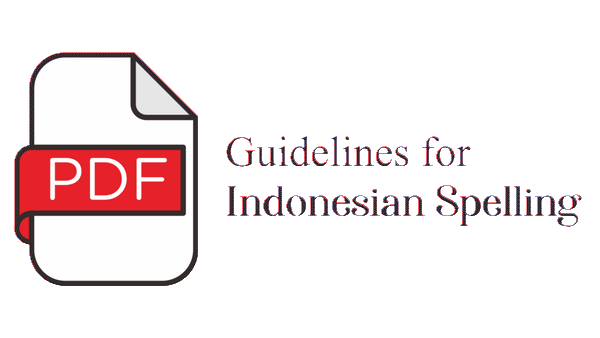
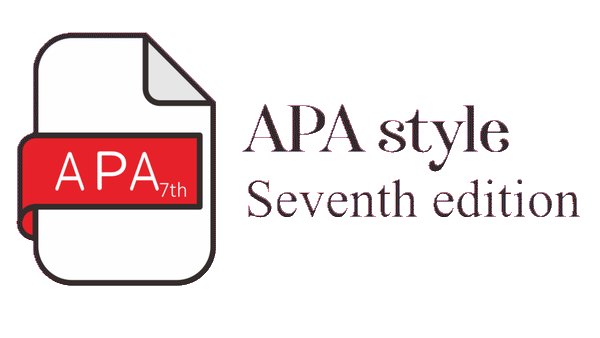


3.png)

